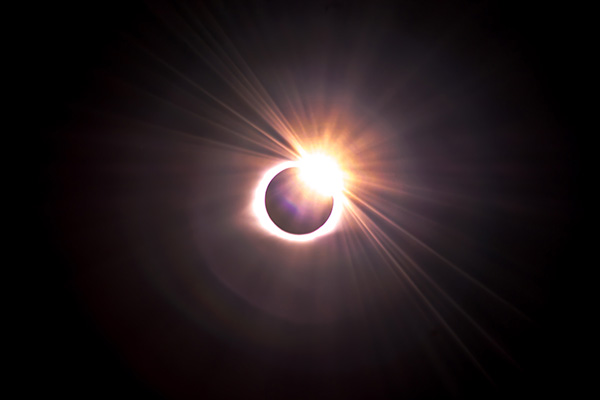Remember reading in Joshua about the day the sun stood still?
Researchers from the University of Cambridge in England say they have pinpointed the oldest recorded solar eclipse — and they say it correlates with the astronomical happening mentioned in the Old Testament.
As the story goes in Joshua 10, the Israelites were battling the Amorites, and Joshua spoke to the Lord and said, “Sun, stand still at Gibeon, and moon, in the Valley of Aijalon.”
And according to Joshua 10:13, “the sun stood still, and the moon stopped, until the nation took vengeance on their enemies. Is this not written in the Book of Jashar? The sun stopped in the midst of heaven and did not hurry to set for about a whole day.”
Professor Sir Colin Humphreys from Cambridge’s Department of Materials Science and Metallurgy said the King James Bible translation of 1611 interprets the text to mean that the sun and moon stopped moving.
Hebrew wording
“But going back to the original Hebrew text, we determined that an alternative meaning could be that the sun and moon just stopped doing what they normally do: they stopped shining,” he explained, according to The Christian Post.
The original Hebrew wording could be referring to a solar eclipse, a situation where the moon passed between the earth and sun and made the sun appear to stop shining, he said.
“This interpretation is supported by the fact that the Hebrew word translated ‘stand still’ has the same root as a Babylonian word used in ancient astronomical texts to describe eclipses,” Humphreys said.
With that in mind, the University of Cambridge announced in late October that researchers were able to refine the dates of the biblical text and an ancient Egyptian text to pinpoint the Israelites’ presence in Canaan between 1500 and 1050 B.C.
Annular eclipse
Historians had been unsuccessful at finding a total eclipse in that window, but that didn’t mean the information didn’t jive.
“What the earlier historians failed to consider was that it was instead an annular eclipse, in which the moon passes directly in front of the sun, but is too far away to cover the disc completely, leading to the characteristic ‘ring of fire’ appearance. In the ancient world, the same word was used for both total and annular eclipses,” the Cambridge article explains.
The annular eclipse in question — the only one visible from Canaan in that time frame — happened Oct. 30, 1207, B.C. in the afternoon, according to their calculations.
An Israeli research team also offered information in January that backed up this claim.
They turned to Hebrew etymology to help explain the potential contradiction if the passage was understood to mean the sun lingered in the sky.
The word “dom,” translated “stand still” in Joshua 10, actually means to “become dark,” which would fit well with the characteristics of an eclipse, the Post reported. (TAB)






Share with others: